Tue 12 May 2009
Archived Review: FRANK G. PRESNELL – No Mourners Present.
Posted by Steve under Authors , Characters , Crime Fiction IV , Reviews[5] Comments
FRANK G. PRESNELL – No Mourners Present.
Dell 646, paperback reprint; no date stated, but circa 1953. (Cover by Robert Stanley.) Hardcover edition: William Morrow & Co., 1940.
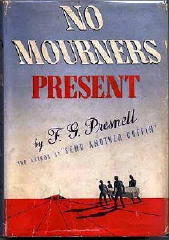
The jacket of the hardcover edition suggests that the book may have been published as by “F. G. Presnell,” but any final judgment on that would have to wait until the title page has been examined, the final and only arbitrator on matters of bibliographic importance such as this.
Looking for more information about Mr. Presnell (1906-1967), I’ve not found anything on the Internet that either discusses him or his three mysteries in any way that’s significant. At the moment, all I can tell you about him personally is what Al Hubin says in Crime Fiction IV:
“Born in Mexico; educated at Antioch College and Ohio State Univ.; designer and engineer; lived in Ohio for 40 years, then in Los Angeles.”
Which is a start, but what it doesn’t say is why Mr. Presnell wrote two good books in 1939 and 1940, both with high-powered (and hard-boiled) practicing attorney John Webb, but then not another novel until 1951, and alas, Webb is not in it.
For the record, here is a list of Presnell’s only contributions to the world of crime fiction:
Send Another Coffin. Morrow, hc, 1939. Detective Book Magazine, Winter 1939-40. Handi-Book #39, pb, 1945.
No Mourners Present. Morrow, hc, 1940. Dell 646, pb, 1953.
Too Hot to Handle. M. S. Mill / Morrow, hc, 1951. Dell 593, pb, 1952.
I had not known until I looked it up, but a movie was made of Send Another Coffin, one I’ve never seen, but I believe I shall have to purchase it. The title of the movie is Slightly Dishonorable (United Artists, 1940), and besides Pat O’Brien and Ruth Terry, whom you see below, as the two leading characters – I’ll get to that in the next paragraph – Edward Arnold and Broderick Crawford are also in the film, big names both.
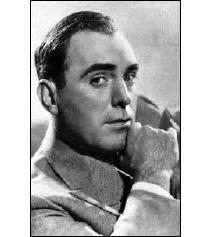
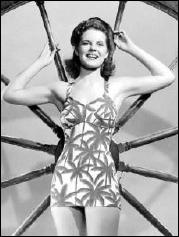
These photos were taken at different times, and neither time may coincide with the movie, but they will give you an idea at least of what Hollywood thought the characters looked like. (Since I was reading the Dell paperback, you can tell what I thought they looked like, when I was reading it. The scene on the cover, which you’ll see somewhere below, is in the book.)
In the movie, Ruth Terry is credited only as “Night Club Singer,” but in the book she has a name: Anne Seymour. In the followup book, the one at hand, she has a brand new name, that of Anne Webb. A substantial part of No Mourners Present is the mystery novel, of course – and I’ll get to that in moment too – but another significant portion of it, one mixed up one with the other, concerns the domestic life of the two newlyweds.
As it happens, the tough attorney John Webb is deeply in love with his wife. That much is apparent right away. He also seems to wonder how it is that he is so lucky to have her in love with him. Her background as a singer seems to be a concern to him as well: how well will she fit in with the wealthy set that he sometimes hangs around with?
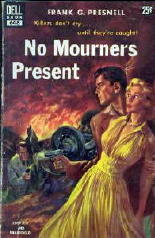
Without revealing too much, I think Anne Webb is smarter in many ways than he thinks she is, and that she can hold her own in his world very well indeed, and maybe even better. John has nothing to worry about in that regard.
Of course there is no way of knowing. Two books with the Webbs, and that was all there were. As for Mr. Presnell, perhaps we must assume that the war intervened, and life and a family and earning a living.
The town in which John Webb as an attorney also has considerable political clout is not named, I don’t believe, and since Hubin doesn’t suggest a setting (I just checked) neither do I believe it is a matter of my missing it.
With very few preliminaries, the mystery gets into action right away, with Jake Barman’s murder taking place on page 15, one page after Webb very nearly slugs a radio news commentator for a remark he makes about Anne. Anne takes him to task reproachfully afterward. “Listen,” she says. “You’ve got to stop hitting people.”
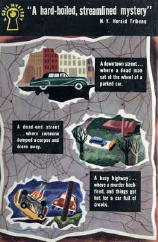
This fellow Barman is a partner in a building firm, or he was, and he also had ambitions of being elected governor. He is on the outs with his wife, however, which is a liability, especially since everyone knows that Julie Gilson, his secretary, is also his mistress. She’s also the leading suspect as well, especially after she disappears completely from sight after Barman’s death.
Without a client, Webb is only incidentally involved until Julie’s brother comes to town are hires him to help protect her name. Once hired, Webb goes immediately into Perry Mason mode. See page 40, and you will see exactly what I mean.
If you’re only in your 30s or 40s, it may not realize it – it’s probably too long ago – but in 1940 if your company bucked either the gangs or the unions, people were maimed for life. This is the sort of thing that gets Webb’s blood boiling as well. Here’s a long quote from page 45. He’s talking to the man he’s working for in charge of operations at a chain of cleaning establishments.
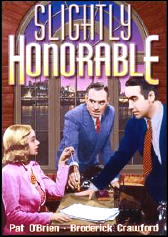
I mentioned Perry Mason a short while back. Perry was tough in his early days, but not as tough as John Webb. Here is a portions of his thoughts, his philosophy of action, you might say, taken from page 61:
As a word of warning, the book is a little too talky to be this tough all the way through, but when it is, it is. It earns high points as a detective novel as well, or at least it did with me, with plenty of twists and turns in the plot to keep Webb’s brain (and mine) working in as finely-tuned a fashion as his brawn.
The solution is not nearly as finely worked out as one of Perry Mason’s, though, containing as it does one small gap I haven’t quite yet figured out.
Nonetheless, even if the mystery itself is not a classic that anyone will remember for very long, if there’s any in mourning at the moment, it’s me, wishing that there were a next one to read, and as much for the characters, I would advise you, as for anything else. Sadly to say, one more time, there wasn’t a next one to read at the time, and there isn’t now.
May 12th, 2009 at 6:19 pm
Slightly Honorable is a good little B mix of comedy and mystery with O’Brien and Crawford a team of lawyers taking on crooked politico Arnold. The director is Tay Garnett (The Postman Always Rings Twice and Bataan) and the movie is well done in the sprightly wise cracking mode with the boys taking on some odd murders. I think it’s in the public domain, and thus available pretty cheaply though you may have to watch out for the quality of the copies.
O’Brien did a number of these smart sassy small mystery films, probably at his best in Irvig Reis noirish Crack Up (1946) with Claire Trevor and Ray Collins based on a Fred Brown story, and Riffraff, with Anne Jeffries and Walter Slezak where he plays a private eye foiling a plot to take over Central American oil fields.
Crawford did another along these lines with he and Rod Cameron as feuding private eyes vying to return an heiress to her for a reward in The Runaround (a low budget It Happened One Night style action comedy), and plays one of Edward G. Robinson’s cronies in the crime comedy Larceny Inc. Among others he has a major role in William Wellman’s Beau Geste and with John Wayne and Marlene Dietrich in Seven Sinners (also directed by Tay Garnett). Of course his Oscar winning star turn in All The Kings Men pushed him out of the second banana and character category into the headliner role followed the next year by recreating his Broadway role in the hit comedy Born Yesterday before he did that iconic turn on television’s Highway Patrol as Dan Matthews. Difficult as it is to believe Crawford was discovered by Noel Coward.
10-4, and out.
May 13th, 2009 at 7:17 pm
I’m sure I purchased SLIGHTLY HONORABLE on DVD back around the time I wrote the review, but prompted by reprinting it, so far my copy hasn’t turned up.
CRACK-UP I reviewed on the blog here: https://mysteryfile.com/blog/?p=492. I see that I agree with you in calling it noirish, but I also added that I was disappointed with it.
While I have RIFFRAFF on tape (I think), it doesn’t sound familiar, so I can’t have watched it.
As for Broderick Crawford, his role on HIGHWAY PATROL must have occurred several years after his better paychecks in the movies. What surprises me is that his career lasted long enough to be on SIMON AND SIMON in 1982. I don’t remember that.
(His first film was a 1937 screwball comedy called WOMAN CHASES MAN. What would we do wothout IMDB???)
May 14th, 2009 at 10:53 am
Steve,
If memory serves, I think I read SEND ANOTHER COFFIN a long time ago – and was very disappointed with it. Definitely have not read the other books.
I saw SLIGHTLY HONORABLE on the Late Show around 1980, and enjoyed it. But around a decade ago, rented a videotape of the film. The sound quality was awful. I could hardly understand a single word of dialogue. Hope the new DVD’s are better. Public domain films are often circulated in atrocious versions.
May 14th, 2009 at 6:11 pm
Crawford was notoriously hard to work with, and added to that hardly anyone’s idea of a leading man so it was hard to find roles in films that fit his status as an Oscar winner.
If I recall his career arc right he did Highway Patrol when he was still playing lead roles in a few films, and only afterward descended to mostly character and guest star roles. Among the last projects he did was playing J. Edgar Hoover (without the dress one hopes). Towards the end of his career he mostly played parodies of himself and earlier roles.
Mike and I saw the same copy of Slightly Honorable, atrocious sound quality, but I’ve seen it since with better quality, or my sound system is better.
I’m a fan of Crack Up, but can understand if you go in with too great expectations it might disappoint. It’s one of those films whose reputation is sometimes blown out of proportion. If you approach it as a superior B (or lower scale A) with noirish touches and enjoy the professional skills of O’Brien, Claire Trevor, and Ray Collins I think it is more enjoyable than if you are expecting a noir classic as it is sometimes claimed.
There is an earlier Riffraff with Spencer Tracy and Jean Harlow (1935) that is no relation to the O’Brien film. I don’t want to oversell the O’Brien film. It’s a fast paced pulpish story in the mystery vein with a cast of familiar faces (Percy Kilbride, Jason Robards Sr., and Jerome Cowan aside from leads O’Brien, Anne Jeffries, and Walter Slezak). O’Brien is Dan Hammer, a less than scrupulous private eye in Panama, hunting for oil field maps taken from a murdered man on a flight from Peru. Ted Tetzlaff directed and Martin Rackin wrote the slick script. If you like tropical intrigue, men in white suits and Panama hats, saloons with attractive saloon singers, and private eyes with fast patter and questionable ethics its a solid little film. I like it better than Crack Up, only because it is a perfect example of the kind of little film Hollywood could do so well making it look almost effortless. For a little it could almost be one of Raoul Whitfield’s Jo Gar tales, it has that sort of Black Mask vibe. It’s no classic, but more entertaining than many that are.
December 11th, 2013 at 8:52 am
Interestingly, Frank G. Presnell’s father, Frank Gilmore Presnell Sr. was a deputy sheriff under Pat Garrett, the man who shot Billy the Kid.